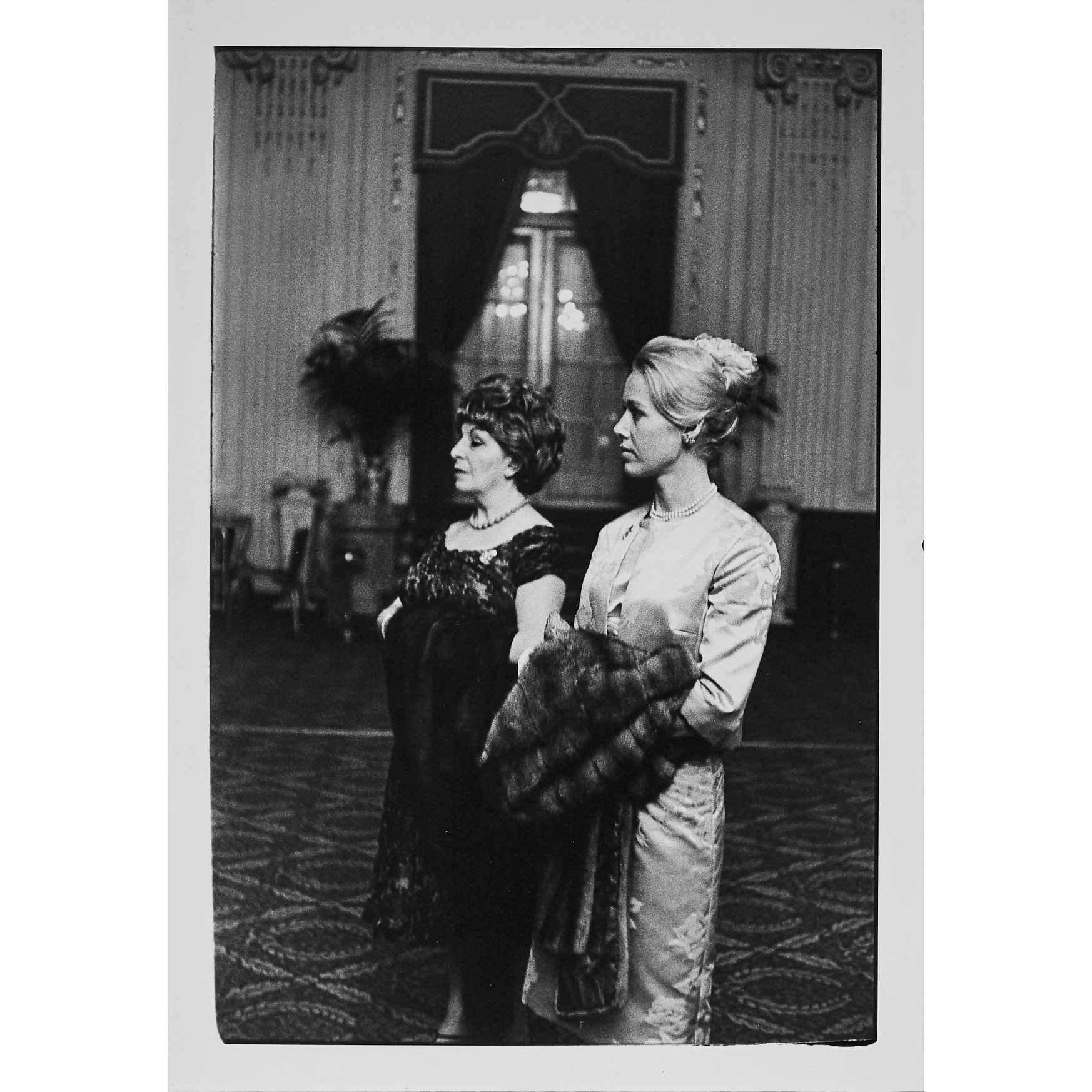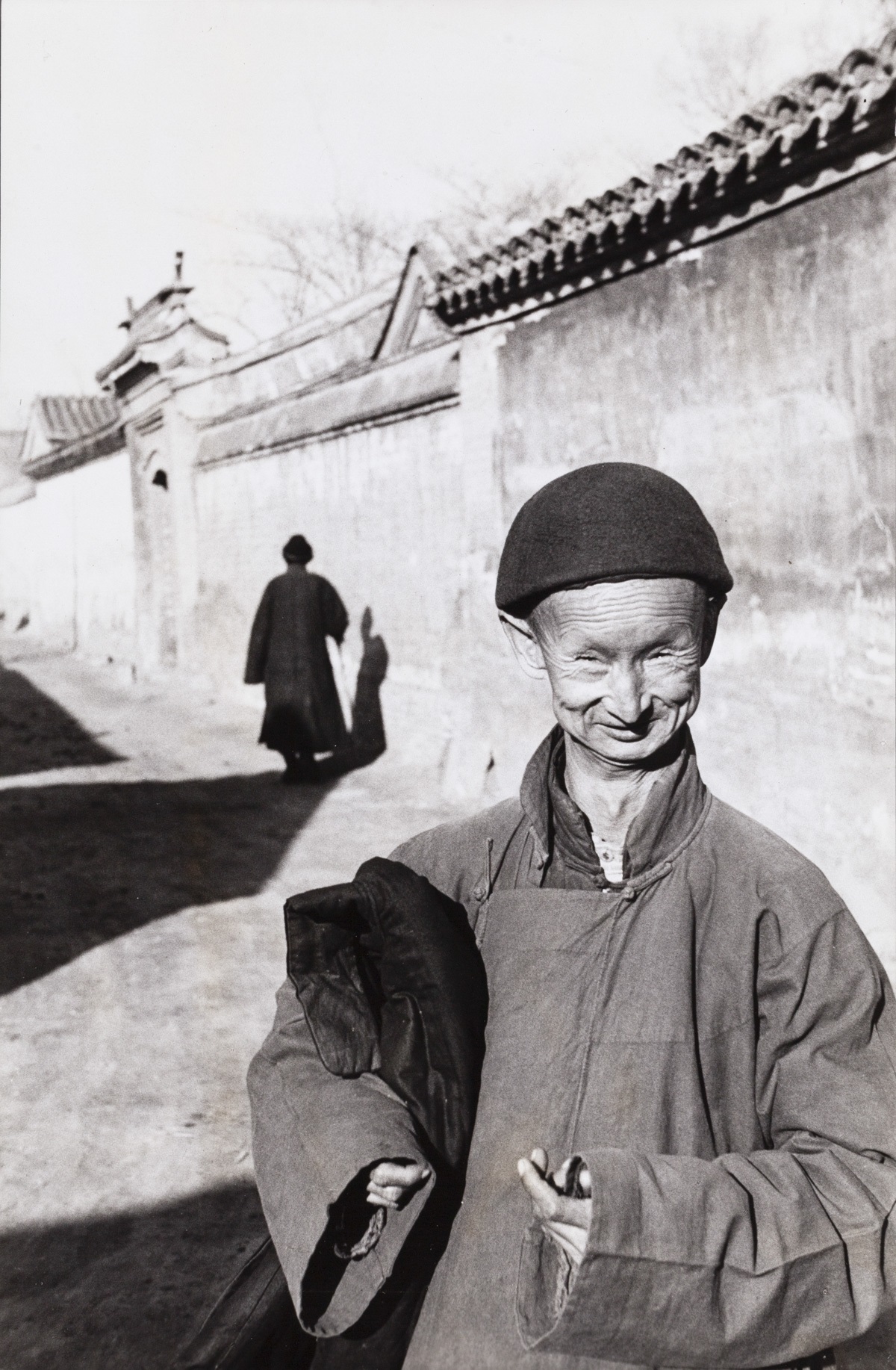Henri Cartier-Bresson Follow Louis Kahn 1961 Gelatin silver print. 12 x 8 in. (30.5 x 20.3 cm) Credit reproduction limitation stamp on the verso.
Provenance Galerie 1900-2000, Paris, 2005 Literature Gombrich, Tête à Tête: Portraits by Henri Cartier-Bresson , pl. 44 Catalogue Essay “Greek architecture taught me that the column is where the light is not, and the space between is where the light is." Louis Kahn Read More Artist Bio Henri Cartier-Bresson French • 1908 - 2004 Follow Candidly capturing fleeting moments of beauty among the seemingly ordinary happenings of daily life, Henri Cartier-Bresson's work is intuitive and observational. Initially influenced by the Surrealists' "aimless walks of discovery," he began shooting on his Leica while traveling through Europe in 1932, revealing the hidden drama and idiosyncrasy in the everyday and mundane. The hand-held Leica allowed him ease of movement while attracting minimal notice as he wandered in foreign lands, taking images that matched his bohemian spontaneity with his painterly sense of composition. Cartier-Bresson did not plan or arrange his photographs. His practice was to release the shutter at the moment his instincts told him the scene before him was in perfect balance. This he later famously titled "the decisive moment" — a concept that would influence photographers throughout the twentieth century. View More Works
Henri Cartier-Bresson Follow Louis Kahn 1961 Gelatin silver print. 12 x 8 in. (30.5 x 20.3 cm) Credit reproduction limitation stamp on the verso.
Provenance Galerie 1900-2000, Paris, 2005 Literature Gombrich, Tête à Tête: Portraits by Henri Cartier-Bresson , pl. 44 Catalogue Essay “Greek architecture taught me that the column is where the light is not, and the space between is where the light is." Louis Kahn Read More Artist Bio Henri Cartier-Bresson French • 1908 - 2004 Follow Candidly capturing fleeting moments of beauty among the seemingly ordinary happenings of daily life, Henri Cartier-Bresson's work is intuitive and observational. Initially influenced by the Surrealists' "aimless walks of discovery," he began shooting on his Leica while traveling through Europe in 1932, revealing the hidden drama and idiosyncrasy in the everyday and mundane. The hand-held Leica allowed him ease of movement while attracting minimal notice as he wandered in foreign lands, taking images that matched his bohemian spontaneity with his painterly sense of composition. Cartier-Bresson did not plan or arrange his photographs. His practice was to release the shutter at the moment his instincts told him the scene before him was in perfect balance. This he later famously titled "the decisive moment" — a concept that would influence photographers throughout the twentieth century. View More Works















Testen Sie LotSearch und seine Premium-Features 7 Tage - ohne Kosten!
Lassen Sie sich automatisch über neue Objekte in kommenden Auktionen benachrichtigen.
Suchauftrag anlegen